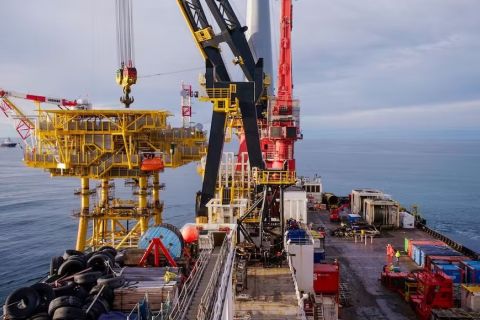U.S. energy firms last week added oil and natural gas rigs for a third week in a row as the federal government seeks more production to help its allies wean themselves off Russian oil and gas after Moscow invaded Ukraine on Feb. 24.
The Kremlin calls its actions in Ukraine a “special military operation.”
The oil and gas rig count, an early indicator of future output, rose 16 to 689 in the week to April 8, its highest since March 2020, energy services firm Baker Hughes Co. said in its closely followed report.
Baker Hughes said that puts the total rig count up 257 rigs, or 59%, over this time last year.
U.S. oil rigs rose 13 to 546 this week, their highest since April 2020, while gas rigs rose three to 141, their highest since October 2019.
More than half of U.S. oil rigs are in the Permian shale in West Texas and eastern New Mexico where total units this week jumped by nine to 332, the most since April 2020. That was the biggest weekly increase in the basin since January 2021.
Even though the rig count has climbed for a record 20 months in a row through March, weekly increases have mostly been in single digits and oil production is still far below pre-pandemic record levels as many companies focus more on returning money to investors and paying down debt rather than boosting output.
U.S. crude production was on track to rise from 11.2 million bbl/d in 2021 to 12 million bbl/d in 2022 and 13 million bbl/d in 2023, according to federal energy data. That compares with a record 12.3 million bbl/d in 2019.
But with oil prices up about 29% so far this year after soaring 55% in 2021, a growing number of energy firms said they plan to boost spending for a second year in a row in 2022 after cutting D&C expenditures in 2019 and 2020.
The 2021 spending increase, however, was small and much of it went toward completing wells drilled in the past, known in the industry as DUCs.
Analysts said the industry must drill new wells going forward because the number of DUCs available was dropping fast.
“Drilled [but] uncompleted inventory is at historically low levels,” analysts at Mizuho, a bank, said in a note this week.
“We expect drilling activity to continue to increase slowly in the Permian, while high prices incentivize continued drawdown of already low [DUC] inventory,” the Mizuho analysts said.
The U.S. Energy Information Administration said in a recent report that the number of DUCs left in the biggest shale basins fell in February to just 4,372, their lowest since at least December 2013.
Recommended Reading
E&P Highlights: March 15, 2024
2024-03-15 - Here’s a roundup of the latest E&P headlines, including a new discovery and offshore contract awards.
E&P Highlights: Jan. 29, 2024
2024-01-29 - Here’s a roundup of the latest E&P headlines, including activity at the Ichthys Field offshore Australia and new contract awards.
Rystad: More Deepwater Wells to be Drilled in 2024
2024-02-29 - Upstream majors dive into deeper and frontier waters while exploration budgets for 2024 remain flat.
TotalEnergies Fénix Platform Installed Offshore Argentina
2024-02-13 - First gas from the TotalEnergies-operated project is expected in fourth-quarter 2024.
Deepwater Roundup 2024: Offshore Europe, Middle East
2024-04-16 - Part three of Hart Energy’s 2024 Deepwater Roundup takes a look at Europe and the Middle East. Aphrodite, Cyprus’ first offshore project looks to come online in 2027 and Phase 2 of TPAO-operated Sakarya Field looks to come onstream the following year.





